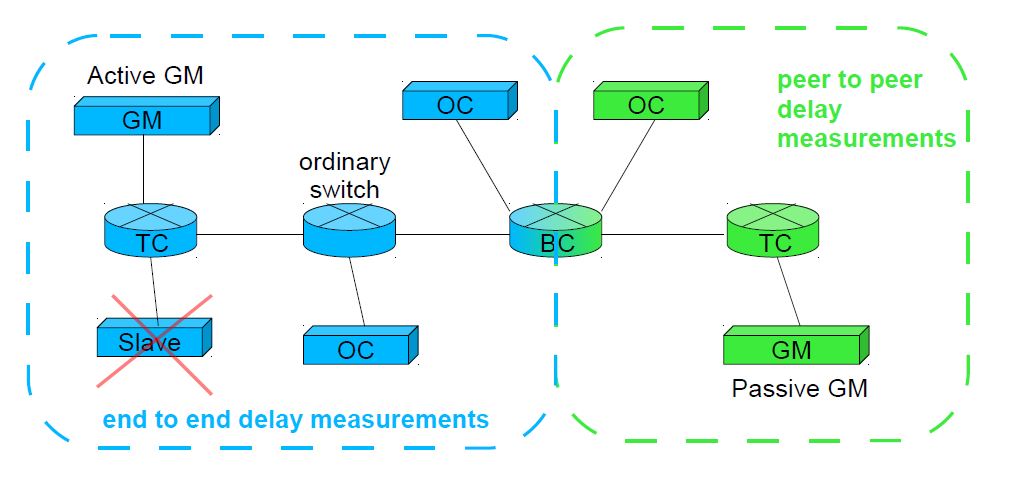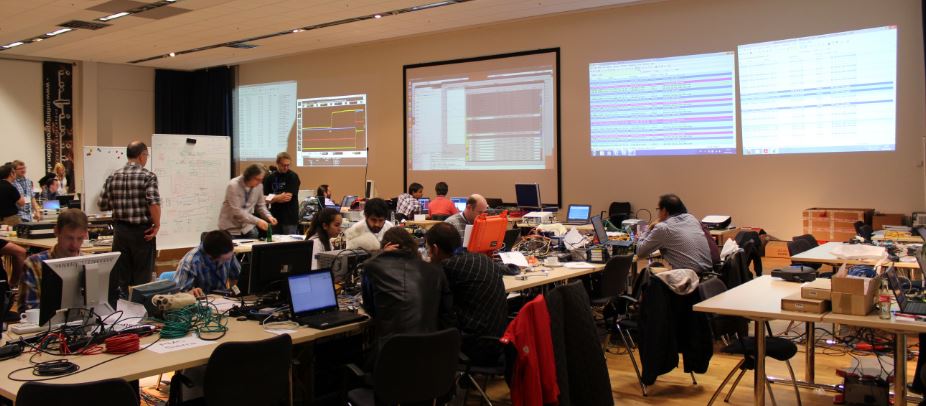Five Minute Facts About Packet Timing
By Doug Arnold.
As we’ve seen in previous posts, PTP has many optional features, and often more than one way to do things. This is what gives PTP its awesome flexibility to cover so many different kinds of applications. There is however a dirty secret behind this power: PTP devices do not necessarily work together. Not unless they are configured with a compatible set of choices for 1588 options and settings. OK, actually this is not so secret, but it does present a problem. The solutions is … profiles.
Profiles are a set of rules which place restrictions on PTP, intended to meet the needs of a specific application or set of similar applications. The IEEE 1588 standard itself only defines one profile,referred to as the “default profile”. Other profiles are defined by other standards organizations for problems which they are trying to solve. Examples include: The Telecom Profile for Frequency Transfer, The Power Profile, IEEE 802.1AS for audio and video applications, and others.
The Default Profile address some common applications, such as many industrial automation applications. Since most PTP capable devices implement the Default Profile it also gives system integrators a standard way to test equipment before deployment. For this reason the Default Profile is always tested at the annual ISPCS 1588 Plugfest. A picture from the last one, which took place in Lemgo Germany is shown below. For more information on the Plugfest see my post on this event.
A profile defines at least some of the following:
- Restrictions on network technology
- Required PTP options
- Allowed PTP options
- Forbidden PTP options
- Performance requirements
The IEEE 1588 Default Profile can operate over any network technology. There are no restrictions in the standard. This is not true of all profiles.
The Default profile requires the following PTP options:
- The standard Best Master Clock Algoritm, with both priority fields set to 128.
- All management messages implemented
- Domain number zero
- Multicast operation
The Default profiles allows:
- Boundary Clocks (BC), Ordinary Clocks (OC), Grandmasters (GM) and Transparent Clocks (TC). For an explanation of these devices see my previous post
- Either end-to-end delay measurements or peer-to-peer delay measurements. (See the diagram below)
- Announce messages intervals of 1, 2, 4, 8 or 16 seconds, with a default value of 2 seconds
- Announce receipt timeout intervals of 2-10 times the Announce interval, with a default of 3.
- Sync message intervals or 0.5, 1, or 2 seconds, with a default value of 1 second
- Delay request messages intervals of 1, 2, 4, 8, 16 or 32 seconds, with a default value of 2 seconds.
- Grandmaster clusters (don’t worry if you don’t know what this is, nobody has implemented it)
- Alternate masters
- Unicast discovery
- Acceptable master table

Diagram of a Default Profile PTP network. End-to-end and peer-to-peer networks are joined by a Boundary Clock. Note that Slave only devices are not allowed unless the device cannot be configured in another mode.
The Default profile forbids: Slave only ordinary clocks, unless those clocks can’t be placed in any other mode.
The only performance requirement is that grandmasters must maintain frequency accurate to within 0.01%. A figure met even with very inexpensive oscillators.
If you have any questions about PTP or NTP, don’t hesitate to send me an email at doug.arnold@meinberg-usa.com, or visit our website at www.meinbergglobal.com.

If you enjoyed this post, or have any questions left, feel free to leave a comment or question below.